Talk:Emblem of Vietnam/Archive 1
| This is an archive of past discussions about Emblem of Vietnam. Do not edit the contents of this page. If you wish to start a new discussion or revive an old one, please do so on the current talk page. |
| Archive 1 |
South Vietnam
Why isn't there anything on Wikipedia about the coat of arms of South Vietnam? --82.134.154.25 (talk) 11:42, 2 April 2010 (UTC)
External links modified
Hello fellow Wikipedians,
I have just modified one external link on Emblem of Vietnam. Please take a moment to review my edit. If you have any questions, or need the bot to ignore the links, or the page altogether, please visit this simple FaQ for additional information. I made the following changes:
- Added archive https://web.archive.org/web/20110824094302/http://phienbancu.tuoitre.vn/tianyon/Index.aspx?ArticleID=49770&ChannelID=10 to http://phienbancu.tuoitre.vn/tianyon/Index.aspx?ArticleID=49770&ChannelID=10
When you have finished reviewing my changes, please set the checked parameter below to true or failed to let others know (documentation at {{Sourcecheck}}).
This message was posted before February 2018. After February 2018, "External links modified" talk page sections are no longer generated or monitored by InternetArchiveBot. No special action is required regarding these talk page notices, other than regular verification using the archive tool instructions below. Editors have permission to delete these "External links modified" talk page sections if they want to de-clutter talk pages, but see the RfC before doing mass systematic removals. This message is updated dynamically through the template {{source check}} (last update: 5 June 2024).
- If you have discovered URLs which were erroneously considered dead by the bot, you can report them with this tool.
- If you found an error with any archives or the URLs themselves, you can fix them with this tool.
Cheers.—InternetArchiveBot (Report bug) 12:21, 23 December 2016 (UTC)
Historical seals, coats of arms, and emblems
I added a Wikitable format list, preferably someone with the technical skills to create SVG variants should. As of this version I used the presidential seal of South Vietnam as there isn't a standalone version of the CoA to use. Also quite a lot are missing and some additional sources would be welcome. --Donald Trung (talk) 13:06, 18 February 2021 (UTC)
South Vietnamese bamboo blazon

Throughout the existence of the Republic of Vietnam they used the same design, this design notably depicted "the bamboo blazon", which continued to be used when the bamboo coat of arms was phased out. For that reason I can't date the bamboo blazon at all. I would appreciate it if someone were to find sources on its use as I can only find it on South Vietnamese passports and see the bamboo and later dragon coats of arms on official VNCH government seals. --Donald Trung (talk) 01:12, 19 February 2021 (UTC)
Cities and municipalities
I made this list:
| Historical heraldry | |||
|---|---|---|---|
| Symbol | Use | Duration | Description |
| Cities | |||
 |
Coat of arms of Saigon (present-day Ho Chi Minh City). | 1870—1975 | |
 |
Etsucheon of Saigon (present-day Ho Chi Minh City). | 1870—1975 | |
 |
Coat of arms of Hanoi. | 1888—1954 | |
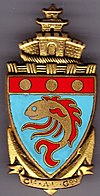 |
Coat of arms of Haiphong. | 1888—1954 | |
 |
Coat of arms of Đà Lạt. | 1930—1975 | |
But upon completing it I realised that it might be outside of the scope of this page, I think limiting it to sovereign and semi-sovereign (Sedang and Trấn Tây Thành, for example) would probably be better. I am open to counterarguments and anyone can add it if they wish. --Donald Trung (talk) 14:24, 8 March 2021 (UTC)
French Indochina
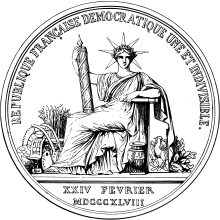

From what I can find French Indochina had its own seal where the Great seal of France, which consists of a seated version of Lady Liberty with fasces was adapted for French Cochinchina and French Indochina.
According to this Dutch website: "The symbols for agriculure, the arts and science were replaced by a sheaf of rice. On the right side the branches of oak were replaced by an anchor (as, initially, the colony was under the supervision of the Ministry of the Navy and the Colonies) and the cock on the rudder disappeared. Also, and of some symbolic importance, the urn symbolizing General Suffrage was omitted.".
Now this is also the version of the great seal that appeared on coins that circulated in French Indochina. I cannot find a version of this image on Wikimedia Commons, but as far as I can tell it was actually more commonly used than the emblem of the government-general. --Donald Trung (talk) 14:38, 8 March 2021 (UTC)
question about color
the citation for the version of the RVN emblem with green dragons shows the emblem all in red, so how do we know the dragons were green? it may be more accurate to show them the same color as the escutcheon, as they are in the cited source. or else provide a source demonstrating they were green. 2601:642:C481:4640:487A:F71:5100:72E6 (talk) 18:09, 4 May 2021 (UTC)guest
- Hello guest, well, originally I wasn't sure about the colour as "Màu xanh" (which was the term Vietnamese sources use for the earlier dragon on the emblem of the State of Vietnam) can be translated into English as "green" or "blue", but then I found multiple depictions of presidential standards of the Republic of Vietnam (South Vietnam) which depict a pair of green dragons and show the same design as the South Vietnamese Presidential seal.
- Since it's the same design on the RVN presidential flag as the RVN presidential seal (stamp) it's safe to assume that it would likely incorporate the same colours. --Donald Trung (talk) 18:48, 4 May 2021 (UTC)
Coat of arms or symbol?
Hello @Great Brightstar:,
I am curious as to why you chose the wording "Symbol" in this edit instead of "Coat of arms"? I originally chose the term "Coat of arms" as it's the common translation of the French term "Armoiries" (found in the 1941 book "Hymnes et pavillons d'Indochine") which is usually translated as "Coats of arms". --Donald Trung (talk) 17:02, 5 June 2021 (UTC)
- OK, fixed. -- Great Brightstar (talk) 17:36, 5 June 2021 (UTC)
People's Army of Vietnam
| Historical heraldry | |||
|---|---|---|---|
| Symbol | Use | Duration | Description |
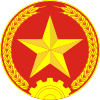
|
Emblem of the Ministry of National Defence and People's Army of Vietnam. | A disc of the colour of the flag (red), the five-pointed star surrounded by ears of rice and a cogwheel in base. Influences: | |
@Hwi.padam:, excuse me for reverting the edit, but the People's Army of Vietnam was not a "state actor", while the Việt Cộng was a supposed shadow government in South Vietnam (but de facto a wing of the North Vietnamese government), the People's Army of Vietnam is a purely military organisation. This is why I believe that the emblem of the Việt Cộng should be here but the emblem of the PAVN shouldn't. Note that the inclusion of the PAVN should also mean the inclusion of the emblems of other government agencies, I am not opposed to such a list but I think that a "List of government symbols of Vietnam" article would be better than a list of emblems of historical Vietnamese governments. --Donald Trung (talk) 18:32, 22 September 2021 (UTC)
I've attempted a somewhat radical solution, usually articles about the main coat of arms of a country include a list of the historical coats of arms of the country, I deliberately left cities and provinces out but kept it to either independent or autonomous historical entities, but since this emblem keeps being placed back I thought that this might be a good solution, although it could better be split to its own article. --Donald Trung (talk) 18:40, 22 September 2021 (UTC)
- After consideration I've removed it again. The Việt Cộng acted as a de jure state agent while the VPA was always an arm of the Democratic Republic of Vietnam or the earlier Indochinese Communist Party. I still believe that there should be a general list of Vietnamese heraldry on the English-language Wikipedia but I don't think that this article should be repurposed for that function (see my exclusion of Vietnamese municipal coats of arms above and why I eventually decided against adding them in, even after spending quite a lot of time and trouble on both researching and listing them). It's best to write this separate article and if someone does so I would be happy to contribute to it. --Donald Trung (talk) 20:57, 27 September 2021 (UTC)
Autonomous Republic of Cochinchina
The status of the coat of arms of the Autonomous Republic of Cochinchina is disputed, while Hubert de Vries notes it as being the Republican coat of arms the only place I've seen it is in the Cochinchinese Republican Guard and I always presumed that it was the insignia of the military rather than the symbol of the state. I have seen a number of websites claim a similar but slightly different coat of arms and I think that the shape of the current image is wrong, as the Republican Guard's shield has the yellow parts more rounded out on the top. As a provisional image it works, but I think that a better (likely contemporary) source should be provided for it. --Donald Trung (talk) 20:42, 2 October 2021 (UTC)
- An image of this shield can be found here, someone with the graphic skills to improve the current image may
overrideoverwrite it. --Donald Trung (talk) 20:48, 2 October 2021 (UTC)
- This image has been replaced with a more historically accurate one. While this one is clearly documented, I would still rather see a better source for it. --Donald Trung (talk) 07:08, 5 October 2021 (UTC)
Seals of Pre-Nguyễn Imperial Vietnam
I have found a number of sources which discuss "national seals" of Imperial Việt Nam but I haven't been able to locate any surviving specimens of either the seals themselves or the documents. What I suspect is that this is a topic in which little interest is vested hence very little of it has come online. What I would like to suggest is for someone to visit museums in Việt Nam and photograph these seals themselves. The Museum of National Vietnamese History in Hà Nội has several pre-Nguyễn seals on display but when I visited most of these were of mandarins and not any Emperors.
Is it possible that the golden seals were melted down? I haven't found any mention of the fate of these golden seals. --Donald Trung (talk) 14:04, 5 October 2021 (UTC)
Ancient symbols
| Historical heraldry | |||
|---|---|---|---|
| Symbol | Use | Duration | Description |
| Ancient | |||
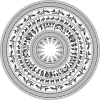 |
Bronze drum of Văn Lang (Đông Sơn culture), attributed to the mythical Hồng Bàng dynasty. | 600 BCE or earlier–258 BCE | The patterns on drums bear a realistic style and show stilted houses, dancing people, people pounding rice, beating drums and sailing, together with animal and birds. The scenes depict daily life of ancient Việt and reflect the artistic talent and mind. The drums were used as musical instruments in festivals, such as prayers for rain, for good harvest and rituals, such as weddings and funerals, as well as command in army. They were also used as funerary objects and symbol of power of tribe leaders. |
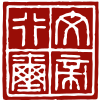 |
Imperial seal of Emperor Văn of Nam Việt. | 137 BCE–124 BCE | The inscription Văn đế hành tỉ (文帝行璽) written in Seal script. |
- Texts relating to the Đông Sơn drums copied from https://en.m.wiki.x.io/wiki/Dong_Son_drum (Permalink).
I am not sure if I should include "Ancient Việt Nam" into this list, mostly because of the fact that the continuity of both the Ancient Vietic peoples and the ancient Chinese states are not entirely clear, though both of these are often attributed as "the origins of the Vietnamese state" and the bronze drums designs became a popular Vietnamese nationalist symbol during the mid-20th (twentieth) century onwards, and as the patterns were symbols of tribal powers they could be seen in a similar light as emblems and coats of arms are today, but wholly different subjects. Anyhow, the ancient Chinese Kingdom of Nam Việt is much more historical and shares its name with modern Vietnam (though reversed).
Note that the government of the Socialist Republic of Việt Nam puts the Đông Sơn Culture's Bronze Drums on almost all of its documents and certificates in the 21st (twenty-first) century and is still a very recognisable symbol today (although prior to the 1950's it wasn't used for over a millennium if not two (2) millennia). --Donald Trung (talk) 13:54, 7 October 2021 (UTC)
State Emblem of the Việt Cộng
@14.226.18.79: (not sure if pings work for users without a Wikimedia SUL account, in response to this edit, do you have any reason to think that the elaborated emblem of the Việt Cộng is incorrect or shouldn't be listed here? I followed Hubert de Vries' De Rode Leeuw website and as far as I can tell this emblem or "achievement" was present on most documents issued by the Việt Cộng. I am open to your arguments. --Donald Trung (talk) 19:16, 9 October 2021 (UTC)
Edits by 14.177.86.85
Hello 14.177.86.85 (as I can't ping IP users), I reverted these edits for the following reasons and feel free to challenge my reasonings. Namely, (1) the removal of the "mythical" from the Hồng Bàng dynasty as its historicity remains unproven and is basically only promoted by nationalist Vietnamese narratives; (2) the widespread removal of exact dates where they are known; (3) the addition of the French resident and French resident-general, and French governor-general seals, as the seal of the government-general of French Indo-China was the highest government symbol used to communicate with the Vietnamese, while the added seals were lower. At the French protectorate of Tonkin article the French Resident-Superior's seal is appropriate as it was the French government's highest office, but adding it here would be like adding the Ming imperial seal to the Jiazhi Province; (4) the imperial seals of the Nguyễn Dynasty were signs of imperial authority but the national seal (Quốc Tỷ) was the Đại Nam thụ thiên vĩnh mệnh truyền quốc tỷ (大南受天永命傳國璽) the inclusion of for example the Nam Việt and Bảo Đại seals make more sense as they were the highest authority and ruled by decree, while neither the French residents nor governor-generals were the highest authority in the same way, by contrast the government-general was, and (5) I'm planning on writing a separate article for the Autonomous Republic of Cochinchina, as it's already a redirect adding "French Cochinchina" to it would at best be redundant and at worse would confuse readers when the separate article is launched. T--Donald Trung (talk) 11:10, 16 February 2022 (UTC)
Date of adoption
According to the Vietnamese-language Wikipedia the earliest known usage of it in official state documents was described as such "On January 14, 1956, President Ho Chi Minh signed Decree 254-SL on the promulgation of the national emblem of the Democratic Republic of Vietnam, together with Appendixes 1 and 2 with the drawing of the national emblem. with gold colour and the National Emblem not coloured." (Ngày 14-1-1956, chủ tịch Hồ Chí Minh đã ký sắc lệnh 254-SL về việc ban bố mẫu quốc huy của nước Việt Nam Dân chủ Cộng hòa, kèm theo đó là Phụ lục số 1, 2 in mẫu vẽ quốc huy có tô màu vàng kim nhũ và Quốc huy không tô màu.) As of this version. The intro itself reads "The current National Emblem of Vietnam (originally the National Emblem of the Democratic Republic of Vietnam) was approved by the National Assembly of Vietnam, the 6th National Assembly session (from September 15 to September 20, 1955). coat of arms proposed by the government. This national emblem was drawn by artist Bui Trang Chuoc and edited by artist Tran Van Can" (Quốc huy Việt Nam hiện nay (nguyên thủy là Quốc huy Việt Nam Dân chủ Cộng hòa) được Quốc hội Việt Nam khóa I, kỳ họp Quốc hội thứ VI (từ 15 tháng 9 tới 20 tháng 9 năm 1955), phê chuẩn từ mẫu quốc huy do chính phủ đề nghị. Mẫu quốc huy này do họa sĩ Bùi Trang Chước vẽ và họa sĩ Trần Văn Cẩn chỉnh sửa.) and is sourced to the Tuổi trẻ newspaper.
All of these seem to contradict the date of adoption mentioned in the current version of this article. --Donald Trung (talk) 22:51, 3 April 2022 (UTC)
Alleged emblem of the Republic of South Vietnam ("Quốc huy" dỏm!)
This is mostly a response to the edits by user "Pastamogus" removing the emblem here and also here. Having looked at 20th (twentieth) century Vietnamese documents and their emblems and while I haven't been able to recover any proof of this emblem on any documents, so I will try to document all my findings here and why I believe that user "Pastamogus' " actions were completely correct.
Let me first copy the entire discussion from the Wikimedia Commons here for context:
"There are no any source about this coat of arms. The uploader indicated that he just only creade a "derivative work" of other three files. How and why this sign of nation can be used without any verify? --[[User:Trần Nguyễn Minh Huy|<font color="green">'''minhhuy'''</font>]] <sup>([[User talk:Trần Nguyễn Minh Huy|talk]])</sup> 04:48, 28 March 2016 (UTC)
- This image was drawn by Christian Siemer [1] according to a description based in the German book Flaggen-Wappen-Daten by Karl-Heinz Hesmer (1947-2013). Short before his death I asked him for the depiction he used for his description. He told me then that this image is not 100 per cent accurate, but did not provide me further details. He died suddenly before I asked him about further details. Since then, I know that this image is not fictional, but also not really correct. So I wait for better source.--[[User:Antemister|Antemister]] ([[User talk:Antemister|<span class="signature-talk">{{int:Talkpagelinktext}}</span>]]) 09:28, 29 July 2016 (UTC)
- There are no other reliable sources to support the description provided by Karl-Heinz Hesmer. There are also some articles in Vietnamese disputing this claim. I think it is most likely that the PRG will adopt the coat of arms of the National Liberation Front here, which also closely resembles their flag. --[[User:Nguyen.asia.18|Nguyen.asia.18]] ([[User talk:Nguyen.asia.18|<span class="signature-talk">{{int:Talkpagelinktext}}</span>]]) 16:47, 5 May 2022 (UTC)"
Nowiki'd the usernames to prevent a ping. Now from that article we can find some information. Namely, in the article the writer (Đạo sĩ chăn gà, pseudonym) claims that they have never seen anyone use or even talk about this national emblem outside of Wikipedia, then they claim that there were no sources for it. The person on the Wikimedia Commons claims that it's from the the German book Flaggen-Wappen-Daten by Karl-Heinz Hesmer (1947-2013), but that book itself doesn't list any sources nor was it specified if the source was contemporary or not. --Donald Trung (talk) 18:04, 12 June 2022 (UTC)
But let's dissect the Daosichanga.org claims a bit further. The main claim for "debunking" the national coat of arms / national emblem of the Republic of South Vietnam is attributed to the following:
"Đây là phần trả lời của Shibo77 cho Antemister khi Antemister hỏi về nguồn gốc của 2 bức ảnh về quốc huy của Cộng Hòa Nam Kỳ (Republic of Cochinchina) và Cộng hòa miền Nam Việt Nam (Republic of South Vietnam). Đại khái là anh ta đã lấy biểu tượng của Việt Nam Cộng hòa ( File:Coat of Arms of South Vietnam (1963 - 1975).svg) để làm biểu tượng cho Cộng hòa Nam Kỳ (File:Coat of Arms of the Republic of Cochinchina.svg - đã xóa) và quốc huy VNDCCH + bản đồ Việt Nam (File:Coat of arms of North Vietnam.svg+File:Vietnam location map.svg) để làm quốc huy CHMNVN.
- Đọc thêm: https://www.daosichanga.com/2015/10/chuyen-quoc-huy-va-thong-tin-tren-mang.html#ixzz7W1VHvs00
- Cám ơn bạn đã ghé thăm Daosichanga.com
- Under Creative Commons License: Attribution Non-Commercial
- Follow us: @daosichanga on Twitter | daosichanga on Facebook
- (Courtesy as the quote is too short for copyright.). Editor's note, the coat of arms of the Autonomous Republic of Cochinchina has been Undeleted.
This isn't the discussion from the Wikimedia Commons that I linked above, in fact the entire criticism seems to be directed at the Wikipedia-side of the argument, as a side-note Đạo sĩ chăn gà seems to write this about Wikipedia: "Một trong những nguồn thông tin mà rất nhiều người tuyệt đối tin vào là trang Wikipedia, có lẽ bởi cái tên mỹ miều là "Bách khoa toàn thư mở"." Which is all fine and dandy until you realise how often he puts to attacking Wikipedia later on. The main part of his / her argument rests on the fact that anyone can edit Wikipedia and that it's really easy to create false claims, this is entirely true and is also why further investigation is needed, as he notes how Wikipedia is perceived in Vietnam as "Thực tế thì bất kỳ ai, chỉ cần đăng ký là thành viên của nó, đều có thể đưa thông tin lên trên trang web này. Bản thân tôi cũng đã nhiều lần "nghịch ngợm" nó. Cũng chính vì vậy, nhiều người có kinh nghiệm thường gọi trang web này là "Wiki cám lợn"." Which isn't flattering, though people have diverse views of Wikipedia. Many academics see it negatively and many academics see it positively. How it's perceived probably has to do with what information is found on it and how correct it is based on the most up-to-date sources. But I digress, the main claim rests on the image being originally posted to Wikipedia and then being re-created for the Wikimedia Commons without a source. User "Antemister" who is usually very critical of fake flags and fake coats of arms accepted this one because it's mentioned in (what I believe to be) a 1975 West German work. The issue with this as user "Nguyen.asia.18" correctly points out is that Karl-Heinz Hesmer doesn't provide any reliable sources himself, even if the book is a reliable source 99% (ninety-nine percent) of the time doesn't mean that it's infallible.
The article ends with the note that: "Như vậy đã rõ. Chẳng hề có cái gọi là quốc huy của CHMNVN mà thực ra chỉ là một sản phẩm của một "cư dân mạng" nào đó. Nhưng điều nguy hại là "đồ dỏm" này lại nghiễm nhiên trở thành thông tin "khoa học lịch sử" của "từ điển bách khoa mở", vốn là "sàng túi khôn" cho rất nhiều người dùng, thậm chí cho cả giới báo chí nước nhà. Và không biết ngoài nó ra, còn bao nhiêu loại "bom bẩn thông tin" tương tự nữa!?" Translated in brief that it's clear that some "Netizen" (cư dân mạngr) made it up and that it can influence real studies of history as people will just repeat false information that they find on Wikipedia. Unfortunately this is also very much true, a good example is the coat of arms of the State of Vietnam which was made with the dragon facing one side while all contemporary depictions show it facing the other, this is because it's purely based off of a written text, but in this instance users followed a source which may not have taken it from a reliable source themselves. --Donald Trung (talk) 18:45, 12 June 2022 (UTC)
Another thing to note here is that the creation of a national symbol can take some time, as early as 1951 did the Ministry of Foreign Affairs of the Democratic Republic of Vietnam ask its government to create an official emblem and seal, but this wasn't realised until 1955. Conflicting information can also exist about a coat of arms, for example the coat of arms of the Nguyễn Dynasty is alleged to have been made during the reign of the Khải Định Emperor but the earliest written work I've seen mentioning it is from the 1940's and the earliest depictions I've seen of it are from the 1930's, all during the reign of the Bảo Đại Emperor. One Heraldrist I consulted claimed that he had seen an imperial badge with the reign era of the Khải Định Emperor on it, but he didn't provide me with photographic evidence. This is just like the Dragon Star Flag where it is alleged to have been made during the reign of the Khải Định Emperor but we've only seen it appear during the reign of the Bảo Đại Emperor. In the case of the coat of arms of the Republic of South Vietnam the depiction is contemporary (1975). However, the sources are lacking, I do know that West Germany sought to have good relations with Communist countries during this era so it's not unrealistic for a West German to have had access to diplomatic channels of the Communist South Vietnamese, but unless we actually see these sources it's safe to say that "what can be alleged without evidence can also be dismissed without evidence". --Donald Trung (talk) 18:55, 12 June 2022 (UTC) .
Here's an image of a diplomatic passport of the Provisional Revolutionary Government of the Republic of South Vietnam, at this point (1973) they didn't have an emblem and used the Việt Cộng flag as the symbol they put both on the cover and inside of their passports. Notice how the North Vietnamese actually used their national emblem.
As of now I've been unable to retrieve any contemporary documents with this emblem on it. --Donald Trung (talk) 20:29, 12 June 2022 (UTC)
The colour of the Chinese dragons on the coat of arms of South Vietnam

The Chinese dragons on the South Vietnamese coat of arms should be blue as was used on diplomatic documents sent by the country. It also appeared blue on presidential standards, but I won't change the image without consensus. --Donald Trung (talk) 12:02, 20 July 2022 (UTC)
- I feel confused too, and I feel that is probably yet another variant. I saw some sources for the CoA of the second republic period, on FOTW I saw a comment claimed "green-grey dragons as supporters", on Bilibili I saw a video shown the dark dragons appeared on presidential standard, but I can't see clearly.
- If they are on display at some museums in Vietnam, or there are some colourful materials saved in some libraries in Vietnam, that might help. -- Great Brightstar (talk) 15:06, 20 July 2022 (UTC)

- @Great Brightstar:, well, above / to your left is "The South Vietnamese coat of arms as it appeared on the letter President Gerald Ford presented to the American Congress asking for help." As it was used on an official letterhead, but the rest isn't in colour. But the author of the above image didn't even base it on this version but a Presidential Banner. The issue comes from a lot of conflicting sources, but the FOTW comment by Marcus E.V. Schm�ger (likely Schmöger) doesn't actually give a source, the eagle variant wasn't even the national coat of arms but a military symbol. Unfortunately the Republic of Vietnam is seen as "a treacherous enemy state" by the current Vietnamese government and Overseas Vietnamese museums of the Republic of Vietnam always excusively focus on the Military of the Republic of Vietnam, so other than the few sources we have online there aren't that many depictions until someone digitises them. --Donald Trung (talk) 22:42, 23 July 2022 (UTC)
Artist
Is there any proof that this emblem isn't still copyrighted by the artist? I had seen someone make the claim that if the artist is known that Vietnam doesn't see it as a government work, is this true? --Donald Trung (talk) 12:56, 28 August 2022 (UTC)
